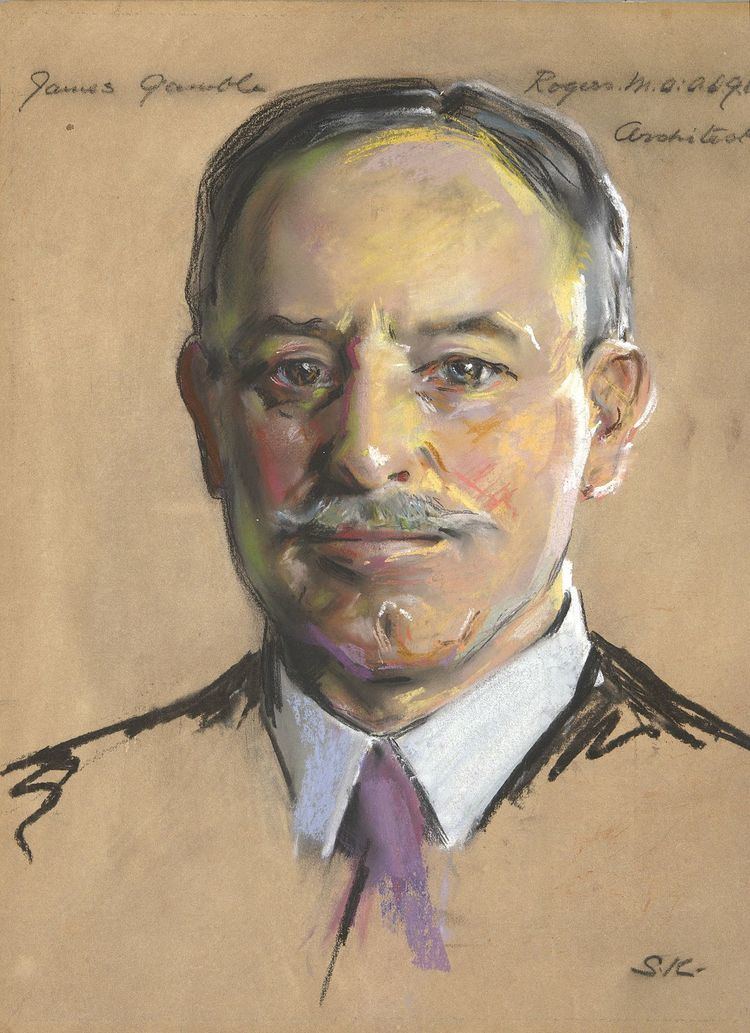Nationality American Role Architect | Name James Rogers Occupation Architect | |
 | ||
Buildings Sterling Memorial Library, Yale UniversityHarkness Memorial Tower, Yale UniversityBerkeley, Jonathan Edwards, Branford, Saybrook, Trumbull, Pierson, Davenport and Timothy Dwight Colleges at Yale UniversitySterling Law Building, home of Yale Law SchoolHall of Graduate Studies, Yale UniversityButler Library, Columbia UniversityDeering Library, Northwestern UniversityColumbia University Medical Center, Columbia UniversityMemorial Sloan-Kettering HospitalYale Club of New York City Died October 1, 1947, New York City, New York, United States Structures Sterling Memorial Library, Harkness Tower, Butler Library, Deering Library, Hall of Graduate Studies Similar People John William Sterling, Nicholas Murray Butler, Charles Deering, Pat Ryan, George Berkeley | ||
INTERLUDE: Ode to James Gamble Rogers
James Gamble Rogers (March 3, 1867 — October 1, 1947) was an American architect best known for his academic commissions at Yale University, Columbia University, Northwestern University, and elsewhere.
Contents

Biography
Rogers was born in Bryan Station, Kentucky on March 3, 1867, to James M. and Katharine Gamble Rogers. Rogers attended Yale University, where he contributed to The Yale Record and was a member of the senior society Scroll and Key, whose membership included several other notable architects. He received his B.A. in 1889, and is responsible for many of the gothic revival structures at Yale University built in the 1910s through the mid-1930s, as well as the university's master plan in 1924. He designed for other universities as well, such as the Butler Library at Columbia University, many of the original buildings at the Columbia-Presbyterian Medical Center (now the Columbia University Medical Center), and several buildings at Northwestern University, notably Deering Library.
He died in New York City on October 1, 1947.
Legacy
Rogers was philanthropist Edward Harkness's favorite architect, and Harkness would often condition a gift for a new academic or medical building upon the institution's agreement to hire Rogers for the project. It is thus no coincidence that Rogers' work is abundant at Yale, Columbia and the other institutions Harkness supported lavishly. Though Harkness loved Rogers's work, when Harkness donated a new home for Wolf's Head, his society at Yale, another architect (Bertram Goodhue) was chosen.
Rogers' Collegiate Gothic designs for Yale lent an air of instant heritage and authenticity to the campus. Rogers was criticized by other prominent Gothic-revival American architects, namely Ralph Adams Cram, for his use of steel frames underneath stone cladding, and tricks such as splashing acid on stone walls to simulate age. Rogers was also criticized by the growing Modernist movement of the time. The 1927 Sterling Memorial Library came under especially vocal attack from Yale students for its historicist spirit and its lavish use of ornament. But current opinion generally regards the building as a triumph, being both beautiful and functional.
Rogers's nephew, James Gamble Rogers II (1901–1990) was also an architect, who designed homes in Winter Park, Florida for the Rogers family architecture firm Rogers, Lovelock and Fritz, where Rogers II's son John (Jack) Rogers is a principal architect.
Rogers II's other son, James Gamble Rogers IV (1937–1991) was also trained as an architect. After working in the family firm as a young man, James Gamble Rogers IV decided to pursue his passion for music. He became a noted Florida folksinger, composer and guitarist, now memorialized by the Gamble Rogers Memorial Foundation, Gamble Rogers Middle School, and Gamble Rogers Memorial State Recreation Area at Flagler Beach on Florida's east coast.
James Gamble Rogers' architectural drawings and photographs are now held in the Dept. of Drawings & Archives in the Avery Architectural and Fine Arts Library at Columbia University in New York. A number of his built works are listed on the National Register of Historic Places (NRHP).
